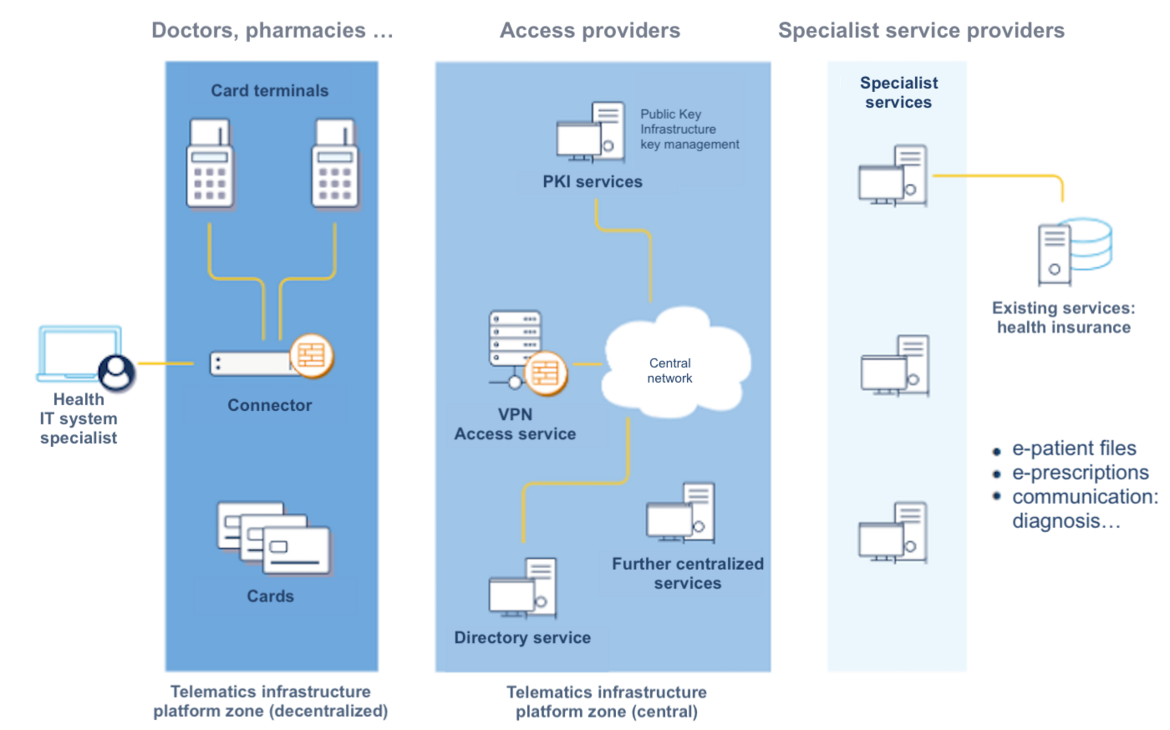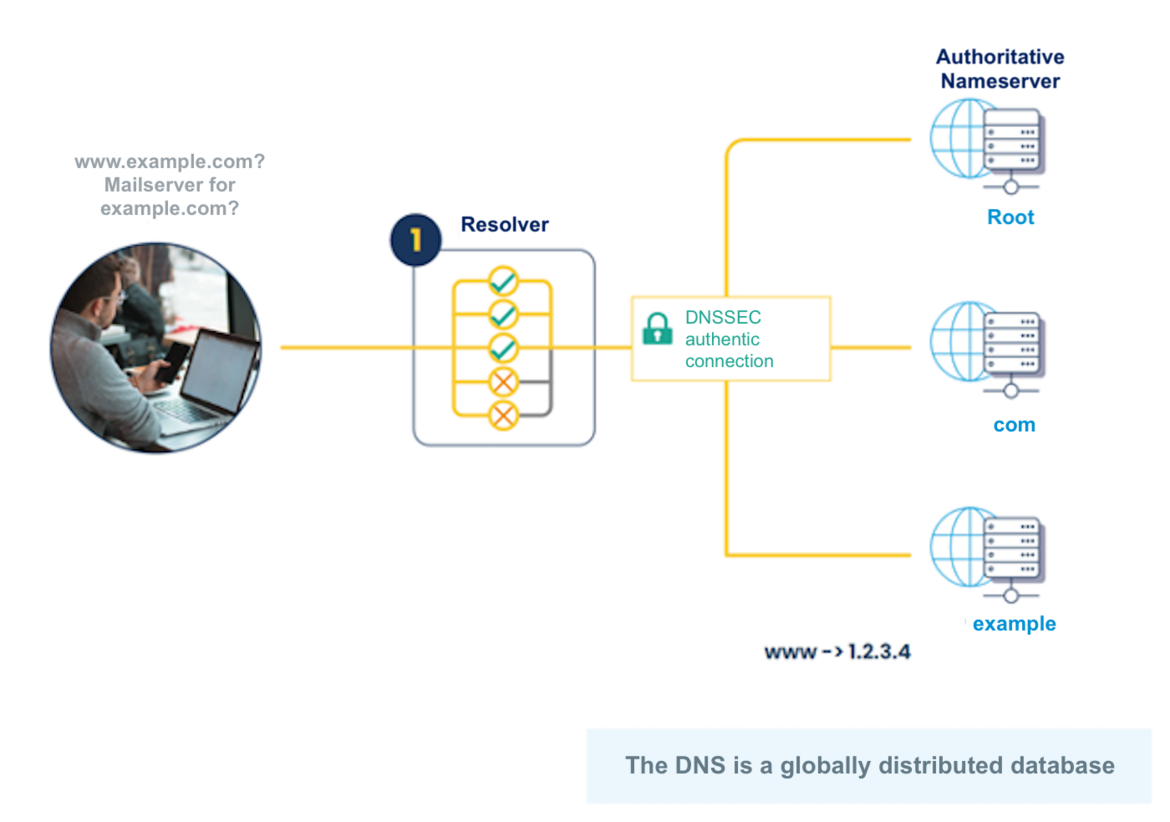Healthy and Secure – the DNS as a Key Component for a VPN
Security is architecturally anchored in telematics infrastructure to protect e-health applications from abuse, says Sven-Holger Wabnitz from CentralNic.

© ipopba| istockphoto.com
Telematics infrastructure connects the participants within the health care system. Healthcare providers from the medical sector (e.g., physicians, pharmacies, etc.) can offer their patients the electronic patient file or issue the electronic prescription in Germany as of this year. It is important to have security architecturally anchored in the telematics infrastructure to protect these applications from abuse.
Below, we will see what role the Domain Name System (DNS) infrastructure – as a component of a Public Key Infrastructure (PKI), a management system for asymmetric key pairs – plays in the telematics. The DNS, as an openly specified basic infrastructure component, is better suited than any proprietary solution and it gives decision-making freedom to the participants in the telematics infrastructure.
Design of the telematics infrastructure
The telematics infrastructure enables the secure exchange of information across sectors. In this process, the healthcare providers communicate with the providers of the specialist services, such as the electronic patient file. The link for establishing secure communications is provided by the access service providers.

The telematics infrastructure enables the secure exchange of information across sectors.
Secure communication is enabled based on a virtual private network (VPN) with the participation of the DNS. The mutual identification for establishing the VPN is ensured by the digital signature based on asymmetric key pairs.
So, we are dealing with two independent cryptographic applications:
- Ensuring correct and authentic communication in the DNS.
- Identification of the communication partners when setting up the virtual private network.
On each connector that initiates the establishment of the VPN on the healthcare provider side, just as on each VPN node of an access service provider, there is a key pair. The public key of the connector is written to the directory service of the access service provider for authorization.
The public key of a VPN node can be retrieved by the connectors via the VPN node. The specific location of this key is to be found in the public DNSSEC-secured DNS of the access service provider.
How does the DNS work?
- The DNS can be thought of as a distributed database with many instances, called authoritative name servers. On each of these name servers, there are database entries, as well as references to other name servers with more detailed information, for example the IPv4 number for www.example.com.
- Finding the desired DNS information of a user software is the task of a resolving name server, also called resolver. The information found is stored by the resolver for a certain length of time, in order to be able to answer new queries, even for only portions of the information, more quickly.
The following picture illustrates this procedure:

Photo by Joseph Frank on Unsplash
The DNSSEC procedure, which is based on digital signatures, is responsible for ensuring the identity of the authoritative name servers as well the integrity of the transferred data vis-à-vis the resolvers.
Secure and confidential communication via VPN
The procedure for establishing the VPN is as follows:
- The connector queries the address of a VPN node from an authoritative name server via a resolver.
- The connector requests the public key of this node from the VPN node and establishes a VPN connection (via IPSec).
- The VPN node authorizes the connector via a directory service.
If the DNS service from step 1 is not available or the DNS responses are not authentic, no VPN connection can be established. As a result, the healthcare providers using this access service provider do not get access to the specialized services.
The DNS as a key component
To ensure the availability of the DNS, particular importance must be attached to three issues for the operation of the DNS in the telematics infrastructure. Incidentally, these affect every company, regardless of the industry. A software application for addressing these issues would have to hide the technical complexity and implement it in an easy-to-use manner:
- A resolver must not be available on the Internet for general use, because such a resolver can be easily used for DDoS attacks.
The source addresses of the connectors of healthcare providers cannot be administered to an extent that is economical or performant. In this scenario, since only a certain number of destination addresses need to be resolvable, the solution is to use a DNS firewall. Outside the telematics infrastructure, a DNS firewall can also protect companies from accessing malicious websites, and even help efficiently with spam protection and defense against botnet communication. - For the authoritative name servers as well as the DNS firewall, an automated, reliable, and easy-to-use management for DNS records, along with DNSSEC key management, must be established. This creates acceptance and ensures a consistent and stable DNS.
- An infrastructure must be embedded in a certified information security management system. This requires audit security, two-factor authentication, rights management, and traceability of changes – in short, the DNS thus becomes measurable and controllable.
For the highest security and data protection requirements, a dedicated solution is appropriate, which is on-premises or hosted by European data centers. This ensures, in particular, data sovereignty for companies.
The maintainability, security, and availability of DNS infrastructure is fundamental to ensuring business continuity, so that healthcare providers participating in the telematics infrastructure can ensure patient care by accessing specialized services such as the electronic patient record or the electronic prescription.
Sven-Holger is a passionate leader with a long track record of successful management. He is very experienced, and has in-depth knowledge in technical and business issues. He has worked for almost 28 years in the domain & DNS business. Sven-Holger is the inventor and creator of the world leading domain & DNS software DomiNIC and is thus an undisputed expert in the DNS environment. Leading companies trust DomiNIC. Currently Sven-Holger is an independent Senior Advisor at CentralNIC and helps to create Internet visions and innovations.
Please note: The opinions expressed in Industry Insights published by dotmagazine are the author’s own and do not reflect the view of the publisher, eco – Association of the Internet Industry.




